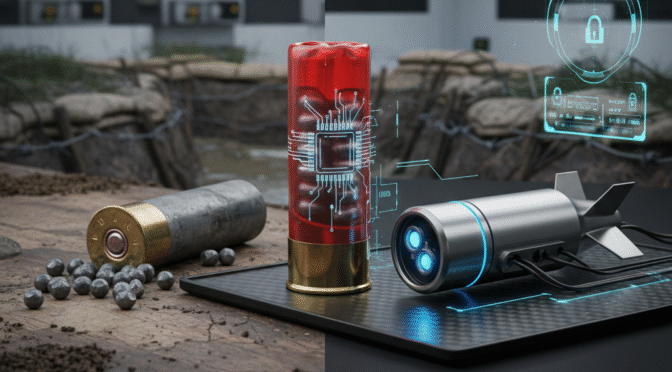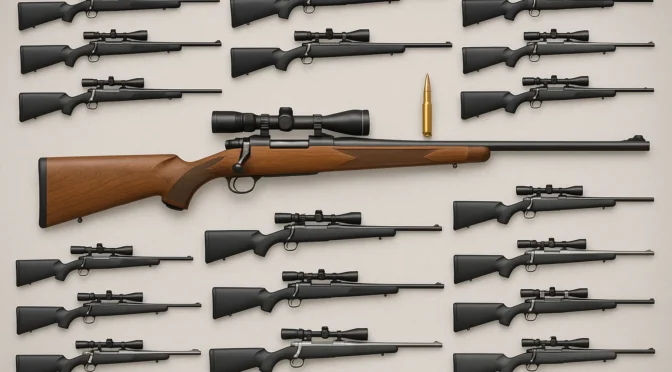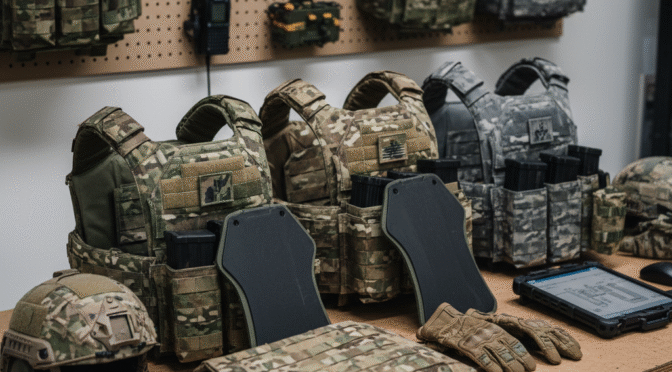The transition from the controlled environment of the police academy to the unpredictable reality of street patrol represents the most critical developmental phase in an officer’s career. It is during this period, under the guidance of Field Training Officers (FTOs), that theoretical knowledge is forged into practical skill and enduring professional character. This report synthesizes extensive analysis of veteran officer testimony, field training manuals, and career survival guides to identify the ten most critical, foundational lessons for new recruits. These lessons transcend tactical proficiency, focusing instead on the core principles of mindset, communication, and character that are the ultimate determinants of an officer’s effectiveness, safety, and long-term career viability.
The analysis reveals an overarching theme: while skills such as firearms proficiency and defensive tactics are essential, they are built upon a foundation of unwavering integrity, tactical communication, and a humble, learning-oriented mindset. A failure in these foundational areas inevitably compromises an officer’s ability to perform their duties safely and professionally. The following ten lessons represent the collective wisdom of senior officers—the essential briefing every rookie needs to not only survive but thrive in a modern law enforcement career. This document is intended to serve as a strategic resource for academy instructors, FTOs, and command staff in shaping the next generation of law enforcement professionals.
Summary Table of Top 10 Lessons
| Lesson # | Core Principle | Key Rationale for Rookies | Impact on Career & Agency |
|---|---|---|---|
| 1 | Integrity is Non-Negotiable | Your word is your bond. A single lie can end your career, while an honest mistake can be overcome. | Builds trust with peers, supervisors, and the courts. Protects against Brady violations. Upholds agency reputation. |
| 2 | Communication is a Primary Tool | Your mouth is your most-used tool. De-escalation prevents escalation. Effective communication enhances officer safety. | Reduces use-of-force incidents, citizen complaints, and agency liability. Improves community relations and intelligence gathering. |
| 3 | The Report is the Lasting Record | If it’s not in the report, it didn’t happen. Your report is the foundation for prosecution and your defense. | Ensures successful prosecutions, protects officers from false allegations, and provides a clear record for internal and legal review. |
| 4 | Adopt a Mindset of Humility | You are not a veteran. Be a sponge, not a smart-ass. Respect the experience of senior officers and the chain of command. | Accelerates learning, builds positive relationships with FTOs and peers, and prevents career-stifling reputational damage. |
| 5 | Safety is an Active State of Mind | Complacency is the enemy. Every call, every contact, every moment on duty requires active situational awareness. | Prevents injuries and line-of-duty deaths. Mitigates the risks inherent in “routine” tasks. Fosters a culture of vigilance. |
| 6 | Cultivate a Marathon Mentality | This is a 25-year career, not a sprint. Pace yourself, manage stress, and prioritize physical and mental wellness. | Prevents burnout, reduces stress-related health issues and absenteeism, and ensures a long, healthy, and productive career. |
| 7 | Develop an Identity Beyond the Badge | The job will change you, but don’t let it consume you. Maintain a life, family, and friends outside of law enforcement. | Protects against compassion fatigue and cynicism. Provides essential emotional support systems and perspective, improving mental resilience. |
| 8 | Policing is a Team Sport | You are never truly alone. Rely on your partners, back them up, and contribute to the team’s success and safety. | Enhances officer safety on scene, improves decision-making under pressure, and builds a resilient and supportive squad culture. |
| 9 | Be a Perpetual Student | The academy is just the beginning. Your training never ends. Invest in your own development beyond what is required. | Keeps skills sharp and legally current. Fosters adaptability to new laws and tactics. Creates opportunities for promotion and specialization. |
| 10 | Navigate the Locker Room Wisely | Choose your mentors carefully. Avoid the burned-out, cynical veterans who can poison your attitude and career. | Shapes a positive career trajectory, reinforces professionalism, and protects against adopting a negative “us vs. them” mentality. |
Introduction: Bridging the Gap from Academy to Street
The police academy provides a necessary, yet fundamentally incomplete, foundation for a career in law enforcement. It is a controlled environment where recruits learn the legal, ethical, and tactical framework of the profession. However, the real education begins on the first day of patrol. The Field Training Program is the crucible where abstract concepts meet the chaotic, nuanced, and unpredictable realities of human behavior. This report is designed to bridge that critical gap by codifying the hard-won wisdom of senior officers—the essential lessons often learned through high-stakes encounters and career-altering mistakes.
While tactical proficiency is a prerequisite for the job, analysis of veteran advice reveals a consistent emphasis on principles that are more foundational: character, communication, and mindset. These are the attributes that determine not only if an officer can perform a task correctly, but whether they can build a sustainable, honorable, and effective career. This document synthesizes this collective experience to provide recruits with a strategic head start, equipping them with the perspective needed to navigate the challenges of their formative years on the street.
Chapter 1: Integrity is Non-Negotiable
Absolute honesty is the bedrock of a law enforcement career. It is not a “soft skill” but a tactical imperative and a prerequisite for career survival. The most stark and frequently repeated advice from seasoned professionals is a simple, capitalized mandate: “DON’T LIE”. Veteran officers stress that a lie, even a seemingly minor one intended to cover up a mistake, is often a career-ending offense. In contrast, an honest admission of an error, while potentially leading to discipline, is almost always survivable. Integrity is described as “everything,” an asset that, once lost, is “impossible to get it back”. This principle is amplified by the reality that officers live in a “glass house,” where their actions are under constant scrutiny from supervisors, the public, and the courts.
The practical consequences of dishonesty are immediate and severe. A Field Training Officer who catches a recruit in a lie will lose the willingness to teach, peers will lose the trust essential for effective teamwork, and supervisors will be unable to defend the officer’s actions.
Beyond the immediate disciplinary action, a rookie’s decision to lie about a minor procedural error—for example, falsely claiming to have pat-frisked a suspect—is not merely a personal failing; it is a direct and critical threat to the safety of their FTO and partners. The chain of events is dangerously simple. First, the rookie makes a mistake and, fearing reprimand, tells a lie to cover it. Second, the FTO, operating on this false information, proceeds with the encounter under the assumption that the scene is more secure than it is. Third, the suspect, who was not properly searched, produces a weapon that the rookie missed, placing both officers in mortal danger. In this scenario, the lie itself becomes a tactical vulnerability, as dangerous as a flawed room-clearing technique or a weapon malfunction. It transforms the abstract concept of honesty into a concrete matter of officer survival.
Furthermore, the consequences of a reputation for dishonesty extend far beyond the department and into the courtroom, creating a long-term liability that can destroy criminal prosecutions. An officer who develops a reputation for untruthfulness, even from “minor” lies during field training, creates a permanent record. Under the legal precedent set by Brady v. Maryland, prosecutors are constitutionally required to disclose any exculpatory evidence to the defense, which includes information that could be used to impeach the credibility of a testifying officer. An officer with a documented history of dishonesty becomes a “Brady cop”—a liability to the prosecution. Defense attorneys can use this history to attack the officer’s credibility on the stand, arguing that if the officer would lie about a small matter, they would certainly lie about a more significant one. This can lead to the suppression of evidence or the acquittal of a guilty defendant, undermining the entire judicial process. A rookie’s “simple lie” can therefore have a profound and lasting impact, jeopardizing justice years after the fact.
Chapter 2: Communication as a Primary Tool
Effective communication must be viewed not as a secondary “people skill” but as a primary tactical tool, one that is often more effective and invariably safer than the application of physical force. Veteran officers consistently assert that communication skills are utilized “far more often than any other skill” an officer possesses and represent their single “greatest weapon” in the field. This is not hyperbole; it is a reflection of the reality that the vast majority of police encounters are resolved through words, not force.
The core components of effective police communication include active listening, demonstrating empathy, and speaking in a manner that is calm, clear, and firm. These skills are the foundation of de-escalation, a process that can prevent a volatile situation from requiring a physical response. The veteran mantra, “Request compliance, demand compliance, force compliance,” frames this tactical approach perfectly. It is a deliberate, escalating sequence where verbal skills constitute the first two, and most critical, steps. A crucial element of maintaining professional communication is the ability to not take verbal abuse personally. When an officer allows their ego to be drawn into a conflict, they surrender control of the situation and increase the likelihood of escalation.
The practice of de-escalation is more than just a method for avoiding the use of force; it is a powerful form of tactical intelligence gathering. When an officer arrives at a chaotic scene, such as a domestic disturbance, the natural impulse might be to use loud, authoritative commands to establish control. However, this approach often increases tension and provokes a fight-or-flight response. An officer trained in tactical communication will instead use a calm tone, active listening, and open-ended questions to lower the emotional temperature of the encounter. This makes the individuals involved more likely to communicate rather than resist. In the process of verbally “de-escalating” the situation, the officer is simultaneously conducting a more effective investigation. They are gathering crucial information: who is the primary aggressor, are there weapons present, is there an underlying mental health crisis, and what is the history of the conflict?. This makes communication a dual-purpose tool: it mitigates the immediate threat of violence while enabling the officer to develop a more accurate and informed picture of the situation, leading to better decision-making.
On a broader scale, an agency’s reputation and the level of trust it enjoys within the community are built or destroyed one individual interaction at a time, with communication serving as the primary driver. Every time a rookie officer conducts a traffic stop or responds to a call, their communication style—whether it is respectful and professional or dismissive and arrogant—defines that citizen’s entire perception of the police department. A positive interaction, even one that results in enforcement action, can build trust and legitimacy. A negative one can create lasting resentment and reinforce perceptions of police unfairness. In the modern era, these individual experiences are aggregated across the community and amplified through social media, forming the bedrock of public opinion. Therefore, every rookie’s verbal interaction is a strategic communication event for the entire agency. The poor communication of a single officer can undermine the community policing efforts of the entire department, demonstrating the immense ripple effect of this foundational skill.
Chapter 3: The Report is the Lasting Record
Report writing must be understood not as a tedious administrative burden, but as a critical, non-negotiable skill that dictates the outcome of criminal investigations, protects officers from liability, and ensures the proper administration of justice. Veteran officers offer a stark warning: “learn to write well, every report can burn you”. Great, detailed reports are consistently cited as a cornerstone of a successful and defensible career.
Despite its importance, many rookies struggle with this aspect of the job, producing reports plagued by poor grammar, a lack of critical detail, and even poor penmanship. The consequences of such deficiencies are severe and far-reaching. Poorly written reports are a primary reason that cases are turned down for prosecution by the district attorney’s office. They can lead to the suppression of crucial evidence and the loss of otherwise solid convictions in court. A “bulletproof” report is characterized by the “4 C’s”: it is clear, concise, complete, and correct. It must be organized in a chronological and logical manner, and it must meticulously articulate every element of the crime, including the specific facts that establish reasonable suspicion for a stop and probable cause for an arrest.
A well-written report functions as a form of proactive courtroom testimony. Months, or even years, may pass between an incident and an officer’s appearance in court. Human memory is fallible and details inevitably fade over time. A detailed, articulate report, written immediately after the event, serves as the single most reliable tool for refreshing an officer’s recollection. This allows the officer to testify with confidence and consistency, which significantly enhances their credibility before a judge or jury. Furthermore, the detailed narrative provides the prosecutor with a clear roadmap for conducting their direct examination and helps them anticipate and prepare for lines of attack during cross-examination by the defense. The extra time a rookie invests in adding specific details, quotes, and observations to a report is a direct investment in the future strength of the case and their own performance on the witness stand.
Conversely, a pattern of inconsistent or poor report writing across a squad or department creates a systemic vulnerability that skilled defense attorneys can and will exploit. When rookies, often influenced by rushed or cynical veterans, adopt shortcuts like “cutting and pasting” from previous reports or writing sparse, boilerplate narratives, they contribute to a culture of substandard documentation. A defense attorney handling multiple cases involving officers from the same agency may notice this pattern. They can then argue in court that the reports are not genuine, contemporaneous accounts of events, but are instead mass-produced, unreliable documents. This tactic can be used not only to impeach the credibility of a single officer but to suggest a department-wide culture of sloppy and untrustworthy work. This creates a dangerous ripple effect, where the poor habits of a few officers cast doubt on the professionalism of the entire agency, potentially jeopardizing unrelated cases and damaging the department’s crucial relationship with the prosecutor’s office and the courts.
Chapter 4: Adopt a Mindset of Humility
The psychological posture of a rookie officer is a critical determinant of their success during field training and beyond. A humble, learning-oriented mindset—the ability to “be a sponge”—is essential for survival and growth. Conversely, a “know-it-all” attitude is a fast track to failure and reputational damage. FTOs consistently report that the “smart ass” or arrogant rookie, particularly one with prior military or corrections experience, is the most challenging type of recruit to train.
The most effective rookies understand that they are not veterans and will not be for a long time. They follow the simple but profound advice to keep their “eyes and ears open and your mouth shut”. They are quiet, pay attention, and absorb as much information as possible from their trainers and senior officers. This mindset includes an unwavering respect for the department’s hierarchy and chain of command. This is demonstrated by addressing supervisors by their proper title, such as “Sergeant,” even if senior officers use a first name. Finally, this humility encourages asking questions, which FTOs view not as a sign of weakness, but as evidence of engagement, critical thinking, and a genuine desire to learn.
An FTO perceives a rookie’s “know-it-all” attitude not just as arrogance, but as a critical officer safety risk. When an FTO provides corrective feedback on a tactical procedure, such as the proper way to approach a vehicle during a traffic stop, and the rookie dismisses or argues with the instruction, a serious problem arises. The FTO can no longer trust that the rookie will follow commands in a high-stress, life-or-death situation. The rookie’s arrogance signals an unwillingness to be coached, making them an unpredictable and therefore dangerous partner. The FTO’s resulting frustration is not about a bruised ego; it is a legitimate risk assessment. The arrogant rookie is a liability, and the FTO’s willingness to teach will be “stifled” as a matter of self-preservation and the preservation of the team.
Similarly, respecting the chain of command through seemingly minor actions, like using a supervisor’s title, is a rookie’s primary method of communicating their understanding of the department’s culture. Police departments are quasi-military organizations where a clear hierarchy is essential for discipline and effective command during chaotic events. When a rookie addresses a Sergeant by their first name because they observe senior officers doing so, they fail to recognize the context. The senior officers have earned that familiarity through years of shared experience and proven competence; the rookie has not. From the supervisor’s perspective, the rookie’s casualness is interpreted not as friendliness, but as a fundamental lack of respect for the rank, experience, and structure that underpins the entire organization. It signals a potential discipline problem and a failure to assimilate into the professional culture. This small act of communication can have a disproportionate and lasting impact on how that rookie is perceived by leadership.
Chapter 5: Safety is an Active State of Mind
Officer safety is not a static checklist of procedures but a perpetual and active state of mind. The greatest threat to this mindset is the “disease of routine,” which inevitably leads to complacency. A foundational principle for survival, as articulated by veterans, is to operate under the assumption that “everyone you come in contact with intends to do you harm” until their actions prove otherwise. This is not paranoia; it is a professional risk-management strategy designed to counter the human tendency to let one’s guard down.
This mindset is supported by core, non-negotiable safety rules that must become second nature. These include always watching a subject’s hands, as they are the instruments that deploy weapons, and understanding that a gun is involved in every call because the officer brought one. The concept of situational awareness is central to this mindset. It is a constant, three-stage process: perceiving the elements in the environment, comprehending their meaning, and projecting their status into the near future. In practical terms, this means intimately knowing the geography of one’s patrol area to reduce reliance on technology, and on every call, identifying points of cover, potential ambush points, and viable escape routes. The danger of complacency is real and is often learned through the tragic experiences of officers who were injured or killed during “routine” calls where they made dangerous assumptions. Statistics on officer assaults, injuries, and line-of-duty deaths underscore the high stakes of a momentary lapse in vigilance.
Complacency is not a character flaw like laziness; it is a conditioned psychological response that actively “detrains” an officer from their academy instruction. In the academy, a recruit is taught that every traffic stop is a potentially lethal encounter, and their sense of alertness—their “pucker factor”—is high. On patrol, that officer will conduct hundreds of stops with compliant, non-threatening individuals. With each uneventful encounter, the officer’s brain learns through operant conditioning that the initial danger signal was a false alarm. The emotional response associated with danger diminishes. Without that internal, emotional cue, the officer begins to unconsciously cut corners on safety procedures—a less thorough approach to the vehicle, a failure to control the driver’s hands, a poor position relative to the subject. The routine itself has taught them that these steps are unnecessary. Complacency is therefore an insidious form of negative training delivered by the job itself. It can only be combated through conscious, deliberate mental effort on every single call, treating each one with the focus and respect it deserves.
Similarly, developing an intimate knowledge of a patrol area is a significant tactical force multiplier. A rookie who relies solely on GPS for navigation is at a disadvantage. A veteran officer who knows their beat understands its rhythm: the people, the problem locations, and the normal patterns of activity. When a high-priority call is dispatched, the veteran is already mentally visualizing the layout of the location, including alleyways for escape, the best approach routes to remain undetected, and likely hiding spots. This deep knowledge allows the veteran to respond faster, more safely, and more effectively than a recruit who is simply following a map on a screen. This familiarity also enables proactive policing. The veteran recognizes when a car is out of place or a person does not belong, leading to investigative stops and “bingo arrests” based on reasonable suspicion developed from experience and a deep understanding of the environment. Learning the beat is not just about navigation; it is about building a tactical database in the mind that technology cannot replicate.
Chapter 6: Cultivate a Marathon Mentality
A career in law enforcement is a long-term endeavor that demands a marathoner’s mindset. It requires deliberate pacing, resilience, and a proactive commitment to physical and mental wellness to avoid becoming a casualty before reaching retirement. Veteran officers frequently advise rookies that the job is a “marathon, not a sprint,” and that it can take several years of experience to feel truly comfortable and competent on patrol.
The difficulty of career survival is underscored by the observation that only a “small percentage of officers…make it to the end and earn a service retirement”. Many leave prematurely due to medical retirement, termination, or simply quitting. Physical fitness is a core component of this marathon, essential not only for performance in physical confrontations but also for managing stress and building overall resilience. Equally important is mental health. The job is described as being “all negative,” exposing officers to a constant stream of trauma, violence, and human suffering that will inevitably change them. To survive this, officers must learn to manage their inner dialogue, build emotional resilience, and proactively seek help when needed through resources like peer support programs and professional therapists.
A rookie’s early-career enthusiasm, often manifesting as a desire to take on excessive overtime to impress supervisors or earn extra money, is a leading indicator of mid-career burnout. This “sprint” mentality leads to chronic sleep deprivation, poor nutrition, and a constant state of elevated stress. Over time, this relentless pace depletes an officer’s physical and emotional reserves, paving the way for burnout, cynicism, compassion fatigue, and stress-related health issues. The senior officers’ advice to “pace yourself” is a strategic warning against this common pitfall. The very ambition that makes a rookie appear to be a high-performer in their first year can be the exact cause of their flameout in year ten. Learning to manage energy, take time off, and disconnect from the job is a critical long-term survival skill.
While departmental wellness programs are a necessary and positive development, they are ultimately insufficient on their own. An officer’s long-term mental health is a matter of personal responsibility and proactive self-care. Although agencies are increasingly offering resources like confidential counseling and peer support, a cultural stigma against showing vulnerability can prevent officers from utilizing these services until they are already in a crisis. The most resilient veterans advise rookies to prepare themselves and their families for the mental toll of the job from day one, which implies a proactive rather than a reactive approach. This personal responsibility includes building a strong life outside of work, developing healthy coping mechanisms like hobbies and exercise, and learning to recognize the early warning signs of stress and trauma in oneself. Agencies must provide the tools, but the marathon mentality requires each officer to take ownership of their own wellness as a continuous, career-long project, just as they would their tactical skills.
Chapter 7: Develop an Identity Beyond the Badge
One of the most profound dangers in a law enforcement career is allowing the profession to consume one’s personal identity. Cultivating a balanced life, with a strong identity outside of the uniform, is essential for long-term mental health, perspective, and personal happiness. This sentiment is powerfully captured in the advice from a retiring officer to a rookie: “Find something else to do outside of being a cop… if you let it consume you it will ruin you”.
This balance is achieved by intentionally nurturing aspects of life that are separate from police work. This includes maintaining friendships with people who are not in law enforcement to gain perspective and avoid being trapped in a professional echo chamber. It means prioritizing family and hobbies as a way to “decompress” and prevent the stress and trauma of the job from negatively impacting home life. Veterans also advise striving to be the “same person in and out of uniform,” a practice that helps an officer stay grounded and avoid developing a cynical, authoritarian “cop personality” that can be toxic to personal relationships.
The tendency for officers to socialize exclusively with other officers, while providing valuable camaraderie, can inadvertently accelerate the development of a cynical “us vs. them” worldview. When an officer’s entire social circle shares the same professional experiences, their conversations are constantly reinforced by the “all negative” aspects of the job—crime, conflict, and tragedy. This insular environment limits their exposure to the vast majority of the community who are law-abiding citizens. Over time, this can foster a skewed and negative perception of society, leading to a siege mentality that views the public as a source of threat rather than a community to be served. Maintaining relationships with non-police friends provides a vital antidote to this corrosive cynicism, grounding the officer in the reality of the broader community and reinforcing the principles of procedural justice.
Furthermore, a strong work-life balance serves as a key defense against the arrogance and abuse of authority that can sometimes accompany the power of the badge. The job grants officers significant power over the lives and liberty of others. If an officer’s entire identity and self-worth are derived from this professional role, they may struggle to “turn off” that authority-figure persona when they are off-duty, leading to significant conflict in their personal relationships. However, an officer with a rich personal life—one who is also a spouse, a parent, a coach, or a volunteer—has multiple sources of identity and self-esteem. This balanced identity helps keep the power of the badge in perspective. It serves as a constant reminder that being a police officer is what they do, not the entirety of who they are. This humility is crucial for preventing the job from corrupting their character, both on and off duty.
Chapter 8: Policing is a Team Sport
In law enforcement, individual competence is necessary but insufficient for success. Both survival and effectiveness are fundamentally dependent on cohesive and reliable teamwork. Veterans consistently emphasize the importance of being a “Team Player” and avoiding isolation, as the lone-wolf mentality is a liability in a profession where mutual support is paramount.
Seamless teamwork is often demonstrated in unglamorous, everyday events. An anecdote of officers arriving at a chaotic vehicle crash scene and, without being asked, each taking on a different task—interviewing witnesses, measuring the scene, handling paperwork—perfectly illustrates this principle. Each officer took “a piece of the pie,” transforming a complex investigation into a manageable and efficient operation. This interdependence is directly linked to officer safety; in high-risk situations, officers must be able to rely on their partners professionally and emotionally. This synergy is built on a foundation of shared goals and values, which allows team members to anticipate each other’s actions and adapt quickly in dynamic and dangerous environments.
A rookie’s reputation as a “team player” is forged in small, seemingly mundane actions, and this reputation has a significant impact on the level of support they receive from senior officers during critical incidents. Consider two rookies: one consistently volunteers for extra tasks, helps partners with their reports, and shows a willingness to do more than the bare minimum. The other avoids extra work, complains frequently, and isolates themselves from the squad. Senior officers observe these behaviors and quickly form a judgment. When a high-stress call occurs, those senior officers will instinctively provide more guidance, support, and proactive backup to the officer they trust—the one who has proven to be a reliable team player. A rookie’s willingness to help a partner with a routine impound report is therefore directly linked to that partner’s willingness to put themselves at risk for the rookie months later. Teamwork is a system of reciprocity built on a foundation of small, consistent contributions.
Moreover, an effective and cohesive team creates a powerful informal training and error-correction system that is often more immediate and impactful than formal departmental training. Within a well-functioning team characterized by strong social bonds and trust, officers will informally debrief after calls, discussing what went right and what could be improved. In this environment, a senior officer can provide immediate, relevant, and non-punitive feedback to a rookie. For example, they can correct a tactical mistake, like standing in a doorway, in a constructive manner. This peer-to-peer coaching corrects errors in real-time, reinforces good tactics, and disseminates institutional knowledge throughout the team far more efficiently than waiting for an annual in-service training session. A strong team culture thus becomes a self-perpetuating cycle of improvement, organically enhancing the safety and performance of every member.
Chapter 9: Be a Perpetual Student
Graduation from the police academy marks the beginning, not the culmination, of a police officer’s education. A deep-seated commitment to continuous, self-directed learning is the hallmark of a true professional and is essential for navigating a career in a constantly evolving legal and tactical landscape. Veteran officers stress that one can “never know everything” in this job and that the training must never stop.
This commitment often requires investing in one’s own training, even on personal time and at personal expense, a practice that not only makes for a better officer but also opens doors to future career opportunities. Key areas for continuous study include case law, evolving tactics, advanced communication skills, and new technologies. A critical part of this learning process involves patience and focus. Rookies are advised to first “master the fundamentals” of patrol work before seeking out specialized assignments or promotions, ensuring they have a solid foundation of experience upon which to build.
An officer’s commitment to self-initiated training serves as a leading indicator of their career ambition and leadership potential. While most officers complete the minimum training required to maintain their certifications, a select few actively seek out additional opportunities, read professional journals, and study legal updates in their own time. This initiative does not go unnoticed by supervisors and command staff. It signals that an officer is not merely doing a job but is deeply invested in mastering a profession. When opportunities arise for coveted positions in specialized units like SWAT, K-9, or criminal investigations, or for promotion through the ranks, these self-motivated officers are viewed as a better investment for the agency. Their demonstrated commitment to learning suggests they will excel in more demanding and complex roles. A rookie who pays for their own advanced training class is not just learning a new skill; they are sending a powerful signal to the organization about their long-term value and leadership potential.
In an era of rapid legal evolution and intense public scrutiny, a failure to engage in continuous learning is not just a career impediment; it is a significant source of agency liability. Case law governing use of force, search and seizure, and custodial interrogation is constantly being refined by the courts. An officer who relies solely on their academy training from years prior may be operating under outdated legal standards. This officer could conduct a search or use a level of force that was once considered acceptable but is now deemed unconstitutional. Such an action can easily lead to a civil rights lawsuit against both the individual officer and the department, resulting in substantial financial judgments and a significant loss of public trust. Therefore, continuous learning is not a luxury; it is a core risk management strategy for the entire agency. Each officer’s personal commitment to staying current on the law directly impacts the department’s legal and financial health.
Chapter 10: Navigate the Locker Room Wisely
The internal culture of a police department is a powerful force that can shape a new officer’s career for better or for worse. Navigating this environment requires rookies to make a critical and early choice: who they will listen to and who they will emulate. The most consistent advice from successful veterans is to “be careful who you pick as a mentor or advisor”.
New officers must learn to distinguish between positive role models and the “burned-out negative veteran who had been retired on duty for the last five years”. These cynical, “lazy cops” who constantly whine and complain about the profession are a toxic influence that must be actively avoided. The influence of an FTO is particularly profound, as they are the primary conduits of agency culture and have the power to instill either excellent habits or dangerous shortcuts in a new officer. The ultimate goal is for a rookie to become their “own trustworthy role model” rather than simply mimicking others. This is achieved by choosing friends and mentors wisely, with the understanding that “you become the people you associate with”.
The cynicism of a “salty vet” can be understood as a contagious social virus that can infect a rookie’s mindset, leading to poor performance and a rise in citizen complaints. A new officer typically starts their career with a high degree of idealism and motivation. However, if they are partnered with or mentored by a veteran who constantly complains about the public, the administration, and the inherent frustrations of the job, that negative framing is transmitted through daily exposure. The rookie begins to adopt this worldview, seeing the community as an adversary and proactive policing as a futile effort. This adopted cynicism inevitably manifests in their behavior on the street. They may become less empathetic, more dismissive in their communication, and more likely to cut corners on procedures, “doing things the ‘easy’ (i.e., ‘wrong’) way”. This behavior directly leads to an increase in citizen complaints for rudeness and a decrease in effective police work. The cynical veteran’s attitude is not just a personal problem; it is an infectious agent that actively degrades the quality of police service delivered by the next generation of officers.
Ultimately, a rookie’s choice of mentors is a key predictor of their entire career trajectory and their ethical durability. From their first day in the locker room, a new officer faces a choice: to align with the high-performing, professional officers who are dedicated to the craft, or to fall in with the cynical, corner-cutting officers who are just running out the clock to retirement. If they choose the path of professionalism, they will be coached on proper procedure, ethical decision-making, and career development. If they choose the path of cynicism, they will be taught how to avoid work, bend rules, and rationalize unethical behavior. Over the course of a career, these two paths diverge dramatically. The first officer builds a reputation for competence and integrity, leading to promotions and desirable assignments. The second builds a reputation for laziness and questionable ethics, leading to a stagnant career and a significantly higher risk of a career-ending mistake or integrity violation. The seemingly small decision of who to associate with during lunch or which “war stories” to listen to is one of the most critical long-term career choices a rookie will make.
Conclusion and Strategic Recommendations
The ten lessons detailed in this report are not isolated tips but form an interconnected framework for professional policing. They reveal that an officer’s long-term success is less dependent on any single tactical skill and more on a foundation of unimpeachable character, a commitment to continuous learning, and a resilient, team-oriented mindset. A failure in one of these foundational areas, such as integrity, will inevitably cascade, causing failures in others, including teamwork, report writing, and courtroom credibility. To better prepare new officers for the complexities of a modern law enforcement career, agencies should consider the following strategic recommendations.
Strategic Recommendations for Law Enforcement Agencies
- Revamp FTO Selection and Training: Agencies must shift from selecting FTOs based solely on seniority or arrest statistics to a model that prioritizes mentorship ability, professionalism, communication skills, and a positive attitude. FTOs are the primary shapers of new officers and must be chosen accordingly. They should receive advanced training in adult learning methodologies, emotional intelligence, and coaching to enhance their effectiveness.
- Integrate “Veteran Wisdom” into Academy Curriculum: Academy training should evolve beyond a purely technical focus. Curricula must incorporate robust, scenario-based modules centered on the principles outlined in this report: ethical decision-making, de-escalation and communication, cultural humility, and mental wellness. This will begin to instill the veteran mindset before recruits hit the street.
- Implement a Formal Mentorship Program: To counteract the influence of negative subcultures within a department, agencies should establish a formal mentorship program. This program would pair new officers with carefully vetted, high-performing senior officers who can provide guidance, support, and a positive professional example throughout the rookie’s probationary period and beyond.
- Promote a Culture of Wellness from Day One: Conversations about mental health, stress management, and work-life balance must begin in the academy and be reinforced during field training. By normalizing these topics from the outset, agencies can destigmatize the use of peer support, counseling, and other wellness resources, fostering a culture where seeking help is seen as a sign of strength.
- Establish a Continuous Feedback Loop: Agencies should create formal, confidential channels for recruits to provide feedback on their FTOs and the field training process. This allows leadership to identify and address negative training practices, correct FTOs who are passing on poor habits or toxic attitudes, and ensure the program remains aligned with the agency’s values and standards.
If you find this post useful, please share the link on Facebook, with your friends, etc. Your support is much appreciated and if you have any feedback, please email me at in**@*********ps.com. Please note that for links to other websites, we are only paid if there is an affiliate program such as Avantlink, Impact, Amazon and eBay and only if you purchase something. If you’d like to directly donate to help fund our continued report, please visit our donations page.
Sources Used:
1. Tips for rookie cops on how to be a successful police officer – Police1, https://www.police1.com/how-to-become-a-police-officer/articles/a-guide-to-police-rookie-success-100-tips-from-police1-readers-BBxkiitsi2x6hWSo/ 2. The Crucial Role of Police Field Training in Shaping Law Enforcement, https://www.policinginstitute.org/onpolicing/police-field-training-programs/ 3. What every field training officer wants a rookie police officer to know, https://www.police1.com/police-training/12-things-every-training-officer-wishes-a-rookie-cop-knew 4. Senior Officers Speak Out: “The Best Advice I Got as a Rookie …, https://www.policemag.com/blogs/patrol/blog/15314588/senior-officers-speak-out-the-best-advice-i-got-as-a-rookie 5. Learning from the Pros: Tips for Rookies – Extreme Tactical Dynamics, https://www.extremetacticaldynamics.com/blog/learning-pros-tips-rookies/ 6. 10 Rookie Errors To Avoid | Police Magazine, https://www.policemag.com/training/article/15348440/10-rookie-errors-to-avoid 7. Report Writing – PoliceOne Academy, https://www.policeoneacademy.com/law-enforcement-training/report-writing/ 8. From Quill to Keyboard: Investigating the Gritty Evolution of Police Reports – CaseMark, https://www.casemark.com/post/history-of-police-reports-for-lawyers 9. The Importance of Police Reports and Why and When They Can be Sloppy – LawCrossing, https://www.lawcrossing.com/article/900010290/The-Importance-of-Police-Reports-and-Why-and-When-They-Can-be-Sloppy/ 10. Officers Reveal 9 Things They Wish They Had Known Before Joining the Police Force, https://www.rasmussen.edu/degrees/justice-studies/blog/joining-the-police-force/ 11. “Police Career Survival”: Top 5 Tips for New Law Enforcement Officers – Genasys, https://genasys.com/blog/police-career-survival-top-5-tips-for-new-law-enforcement-officers/ 12. Conflict management skills – College of Policing, https://www.college.police.uk/guidance/conflict-management/conflict-management-skills 13. Communication Skills – IADLEST, https://www.iadlest.org/Portals/0/Files/Documents/tdocs/Communication%20Skills%20Learning%20Objectives%20del0215.pdf?ver=QNjL8i33ruDUqNokGTIJ2A%3D%3D 14. Police Communication Skills Matter More Than Ever: Here’s Why, https://onlinedegrees.sandiego.edu/police-communication-important-today/ 15. Conflict management using de-escalation, communication and negotiation guidelines – College of Policing, https://assets.college.police.uk/s3fs-public/2020-09/Conflict-management-guidelines.pdf 16. De-Escalation in Everyday Police Operations – Police Chief Magazine, https://www.policechiefmagazine.org/de-escalation-everyday-police-ops/ 17. Focus on Training: Interpersonal Skills Training in Police Academy Curriculum | FBI – LEB, https://leb.fbi.gov/articles/focus/focus-on-training-interpersonal-skills-training-in-police-academy-curriculum 18. Best Police Career Advice – Criminal Justice Degree Schools, https://www.criminaljusticedegreeschools.com/resources/best-police-career-advice/ 19. (PDF) How Strategic Communication Improves Police-Community Relations – ResearchGate, https://www.researchgate.net/publication/379180002_How_Strategic_Communication_Improves_Police-Community_Relations 20. Strategic Communications for Law Enforcement Executives – Agency Portal, https://portal.cops.usdoj.gov/resourcecenter/content.ashx/cops-r1127-pub.pdf 21. 5 Mistakes New Police Officers Make When Starting The Job – Civil Service Success, https://civilservicesuccess.com/5-mistakes-new-police-officers-make-when-starting-the-job/ 22. Section 1.3 Police Report Writing | Board of Supervisors, https://sfbos.org/section-13-police-report-writing 23. Bulletproof Report Writing – Blue to Gold – Law Enforcement Training, https://bluetogold.com/course-description/bulletproof-report-writing/ 24. Writing Reports for Conviction – GACP – Georgia Association of Chiefs of Police, https://gachiefs.com/ga-chief-magazine/writing-reports-for-conviction-3/ 25. 3.1 Basic Report Writing – Metropolitan Police Department – Washington, DC, https://mpdc.dc.gov/sites/default/files/dc/sites/mpdc/publication/attachments/3.1%20Basic%20Report%20Writing.pdf 26. Writing a Police Report – Lewis University, https://www.lewisu.edu/writingcenter/pdf/police-report-resource-revised.pdf 27. Five Tips for Testifying in Court | Office of Justice Programs, https://www.ojp.gov/ncjrs/virtual-library/abstracts/five-tips-testifying-court 28. Avoid costly mistakes: Police officers’ guide to strong courtroom testimony – Police1, https://www.police1.com/legal/articles/are-you-ready-to-testify-77Nc9HVIipxCwteZ/ 29. Three Quick Tips to Improve Your Court Testimony – Ohio Attorney General Dave Yost, https://www.ohioattorneygeneral.gov/Media/Newsletters/Law-Enforcement-Bulletin/March-2014/Three-Quick-Tips-to-Improve-Your-Court-Testimony 30. Rookies, how to survive field training and keep your FTO happy – Police1, https://www.police1.com/chiefs-sheriffs/articles/how-to-survive-field-training-and-keep-your-fto-happy-IwQZbYIHMiuBFTkZ/ 31. Blog: 6 mistakes rookie police officers should avoid, https://www.afba.com/articles/blog-6-mistakes-rookie-police-officers-should-avoid/ 32. Transforming Police Culture | CRS, https://teamcrs.org/transforming-police-culture/ 33. If Complacency is the Symptom, What is the Disease? – OFFICER Magazine, https://www.officer.com/tactical/swat/article/11147375/if-complacency-is-the-symptom-what-is-the-disease 34. How to maintain situational awareness while on duty – Police1, https://www.police1.com/police-products/apparel/articles/how-to-maintain-situational-awareness-while-on-duty-npKxl6P7SjPRsYup/ 35. 2.3 Situational Awareness – Metropolitan Police Department, https://mpdc.dc.gov/sites/default/files/dc/sites/mpdc/publication/attachments/2.3%20Situational%20Awareness.pdf 36. 12 Success Tips for Rookie Police Officers – YouTube, https://www.youtube.com/watch?v=tNj3XzN23tM 37. 8 reasons patrol is a powerful presence – Police1, https://www.police1.com/patrol-issues/articles/8-reasons-patrol-is-a-powerful-presence-oLjR3mCVdLFbzNh3/ 38. Law Enforcement: My Most Dangerous On-The-Job Mistake, and What I Learned From It, https://mtntactical.com/knowledge/le-dangerous-job-mistake-learned/ 39. LEO Near Miss: Officers nearly ambushed in construction site – Police1, https://www.police1.com/officer-safety/articles/leo-near-miss-officers-nearly-ambushed-in-construction-site-dt6xiCqR1WNxf75a/ 40. Law Enforcement Safety – Law Enforcement Epidemiology Project – University of Illinois Chicago, https://policeepi.uic.edu/law-enforcement-safety/ 41. I Graduated from the Academy, Now What? Tips for the rookie police officer – ASP, https://www.asp-usa.com/blogs/trainer-talk/i-graduated-from-the-academy-now-what-tips-for-the-rookie-police-officer 42. How Regular Security Patrols Can Deter Crime and Enhance Safety in Commercial Districts, https://pacificsecuritygroup.com.au/blog/security-patrols-can-deter-crime/ 43. Preventive Patrol Definition, Objectives & Effectiveness | Study.com, https://study.com/academy/lesson/preventive-patrol-definition-lesson.html 44. Advice From A Police Chief To Rookie Cops – Training, Social Media, And More… – YouTube, https://www.youtube.com/watch?v=JYwObDrLciM 45. How feasible it is to be a 45 years old rookie? : r/TheRookie – Reddit, https://www.reddit.com/r/TheRookie/comments/143ra9e/how_feasible_it_is_to_be_a_45_years_old_rookie/ 46. The pros and cons of being a police officer: a career overview – Police1, https://www.police1.com/opinion/articles/the-pros-and-cons-of-being-a-police-officer-BaTtBZTIDtOfCg2r/ 47. Ask Tung: Made a mistake? What every rookie officer needs to know – Police1, https://www.police1.com/police-training/ask-tung-made-a-mistake-what-every-rookie-officer-needs-to-know 48. CSPD Wellness Programming | City of Colorado Springs, https://coloradosprings.gov/police-department/page/cspd-wellness-programming 49. Officer Wellness & Support – Chicago Police Department, https://www.chicagopolice.org/general/improvements/officer-wellness-support/ 50. Wellness for Retention: Investing in Officers to Secure the Future of Policing, https://www.benchmarkanalytics.com/blog/wellness-for-retention-investing-in-officers-to-secure-the-future-of-policing/ 51. 7 Compelling Reasons Why Police Agencies Need a Wellness Program – TacMobility, https://tacmobility.org/blog/7reasons 52. Top 10 Things Police Officers Learn on the Job – Criminal Justice Programs, https://www.criminaljusticeprograms.com/articles/learn-on-the-job/ 53. Balancing Work and Personal Life as a Police Officer in High-Pressure Environments, https://officersurvey.com/balancing-work-and-personal-life-as-a-police-officer-in-high-pressure-environments/ 54. Leadership Spotlight: Compassion in Law Enforcement | FBI – LEB, https://leb.fbi.gov/spotlights/leadership-spotlight-compassion-in-law-enforcement 55. Sponsored Content: The Past, Present, and Future of Officer Wellness, https://www.theiacp.org/news/blog-post/sponsored-content-the-past-present-and-future-of-officer-wellness 56. A Day in the Life of a Police Officer – Keiser University, https://www.keiseruniversity.edu/a-day-in-a-life-police-officer/ 57. Mastering time management: A police officer’s guide to achieving work-life balance – Police1, https://www.police1.com/wellness-week/maximizing-time-a-police-officers-step-by-step-guide-to-a-balanced-life 58. 10 Proven Tips for a Successful Law Enforcement Career, https://golawenforcement.com/articles/10-tips-for-a-successful-law-enforcement-career/ 59. Key Tips for Rookie Police From Veteran Officers – YouTube, https://www.youtube.com/watch?v=5XnmlJ4OoiI 60. Leadership Spotlight: Humility – A Leadership Trait That Gets Results | FBI – LEB, https://leb.fbi.gov/spotlights/leadership-spotlight-humility-a-leadership-trait-that-gets-results 61. Work-Life Balance As a Cop: Don’t Let Police Work Be Your Identity – Lexipol, https://www.lexipol.com/resources/todays-tips/work-life-balance-as-a-cop-dont-let-police-work-be-your-identity/ 62. Roman: The real story of policing is teamwork – Behind the Badge, https://behindthebadge.com/roman-real-story-policing-teamwork/ 63. Building Teamwork Among Officers | Office of Justice Programs, https://www.ojp.gov/ncjrs/virtual-library/abstracts/building-teamwork-among-officers 64. Teamwork in public safety: Key attributes and strategies for success – Police1, https://www.police1.com/chiefs-sheriffs/articles/teamwork-in-public-safety-key-attributes-and-strategies-for-success-29KqS8z3zX8P7yJg/ 65. Appellate Section – Police Misconduct (Civil Cases) – Department of Justice, https://www.justice.gov/crt/appellate-section-police-misconduct-civil-cases 66. (U) Impacts on Field Training Officer Programs: Recruitment and Retention – CNA.org., https://www.cna.org/reports/2021/10/Impacts-on-Field-Training-recruitment.pdf 67. How field training officers shape new officers for better or worse – Police1, https://www.police1.com/police-training/how-field-training-officers-shape-new-officers-for-better-or-worse 68. From Rookie to Ready: 7 Field Training Officer Program Best Practices – PowerDMS, https://www.powerdms.com/policy-learning-center/7-field-training-officer-program-best-practices







